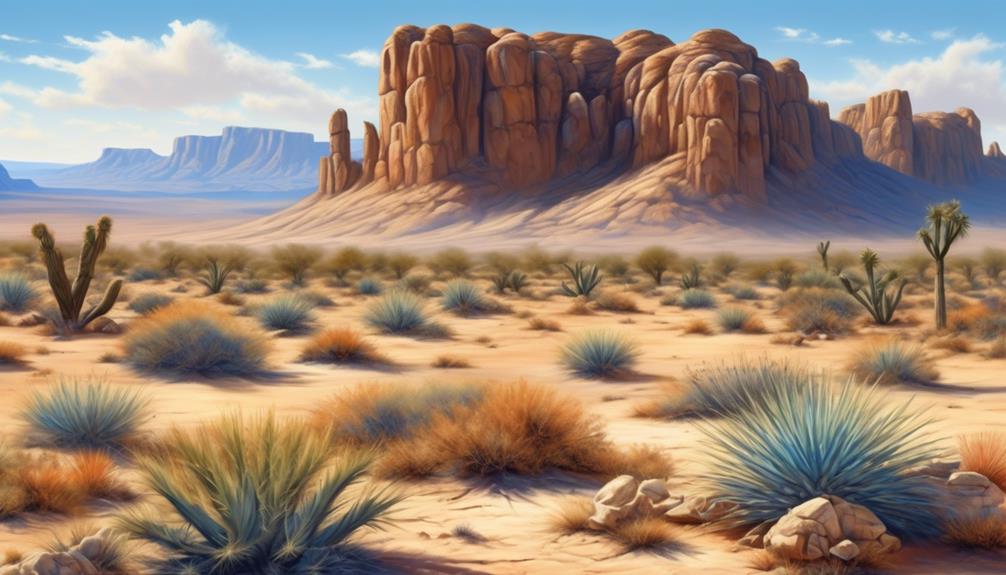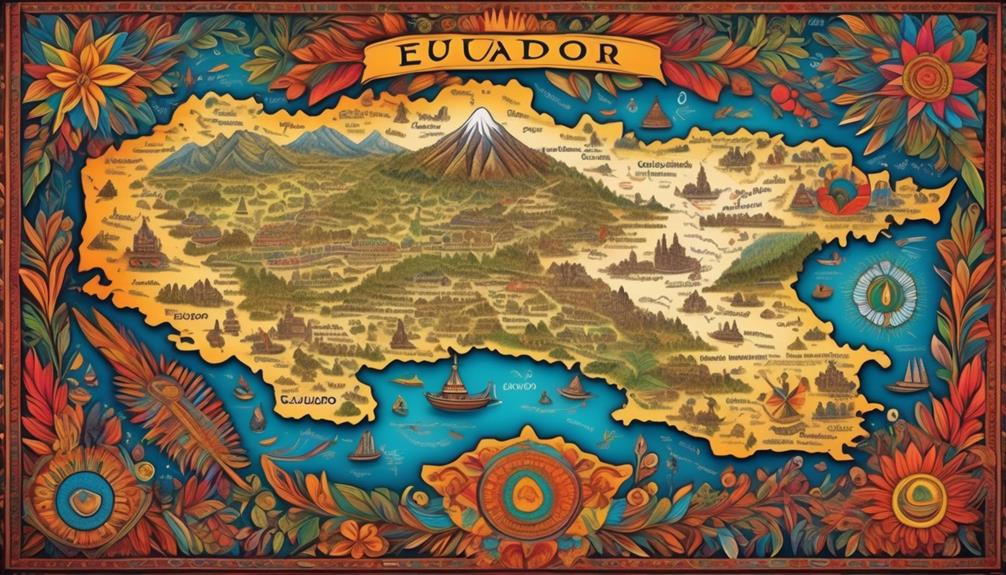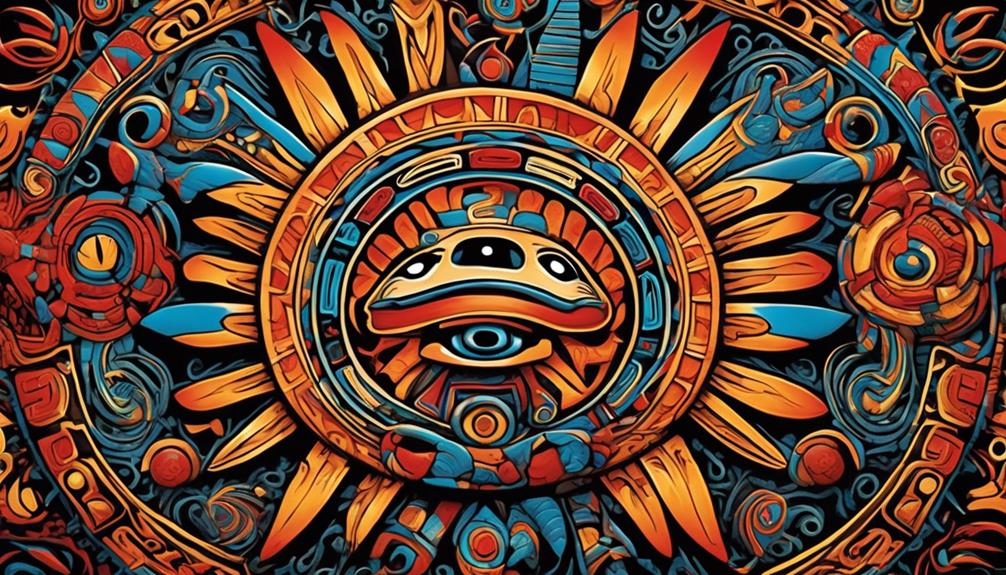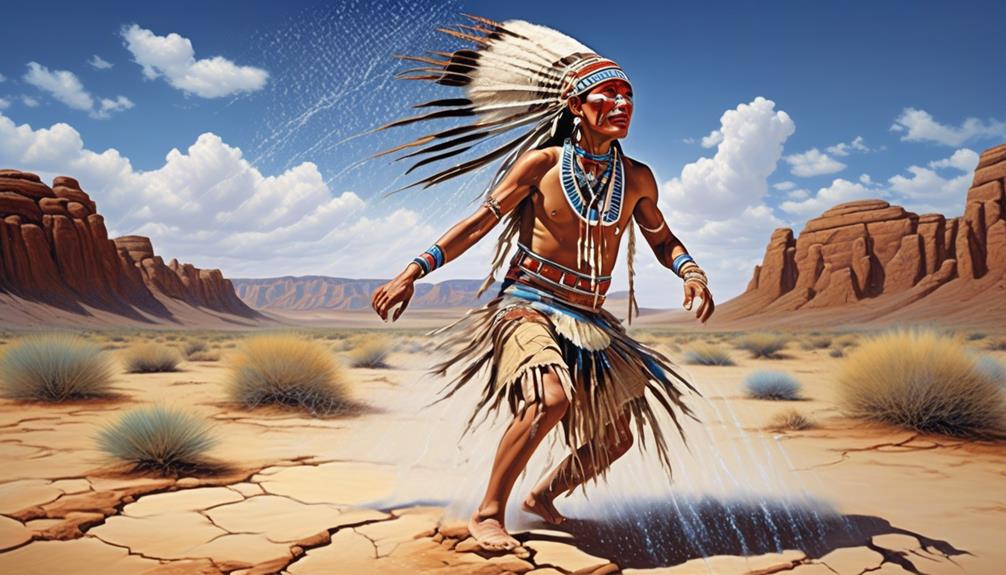What do you associate with the Hopi Tribe? Is it their profound cultural legacy, strong spiritual bond with the earth, or elaborate artistic creations?
One of the most iconic features of the Hopi landscape is the mesa, a geological formation that holds great significance in their traditions. But what exactly is a mesa in the context of the Hopi Tribe?
Let's explore the geological, spiritual, and cultural aspects of these majestic formations that have stood witness to centuries of history and tradition.
Key Takeaways
- Mesas are geological formations characterized by flat tops and steep sides, shaped by erosion patterns influenced by wind and water.
- They are composed of sedimentary layers that contribute to their overall structure and represent different chapters in the Earth's history.
- Mesas hold great spiritual significance in the Hopi culture, representing a connection between the physical and spiritual realms.
- They serve as spaces for community gatherings and sacred ceremonies, believed to be dwelling places of deities and ancestral spirits.
Geological Formation of Mesas
The geological formation of mesas can be best understood through the processes of erosion, deposition, and uplift that have shaped these iconic landforms over millions of years.
Mesas, prominent geological features, are characterized by their flat tops and steep sides, sculpted by the intricate dance of erosion patterns. Erosion, driven by wind and water, carves away at the rock layers, gradually forming the distinct flat summit and rugged cliffs of a mesa.
The deposition of sedimentary layers over time contributes to the composition of the mesa, while uplift forces, such as tectonic activity, elevate the land, exposing the geological layers and shaping the mesa's overall structure.
Understanding the geological features of mesas provides a window into the Earth's history, as each layer represents a chapter in the story of the land. Erosion patterns, influenced by factors like climate and rock composition, contribute to the unique appearance of each mesa, showcasing the intricate balance of natural forces at work.
Through the lens of geological processes, mesas stand as enduring testaments to the dynamic and ever-changing nature of our planet.
Spiritual Significance of Mesas
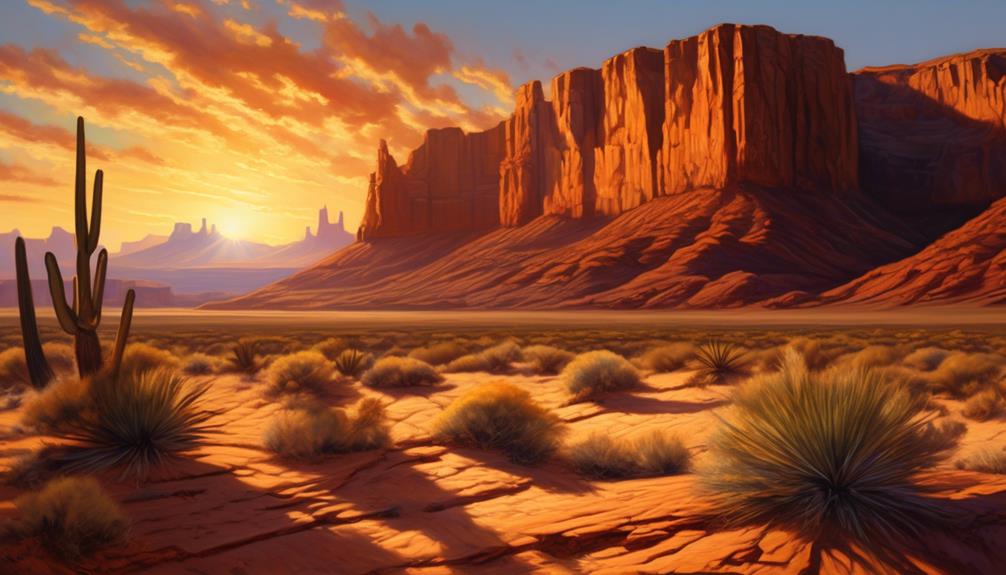
Shaped by the intricate dance of erosion patterns over millions of years, mesas hold profound spiritual significance within the Hopi Tribe's cultural heritage and beliefs. The Hopi people regard mesas as sacred sites, intricately woven into their spiritual practices and ceremonial traditions. The spiritual significance of mesas is deeply rooted in the Hopi Tribe's belief system and is integral to their way of life.
- Sacred Sites: Mesas are considered sacred in the Hopi culture, representing a connection between the physical and spiritual realms. They're revered as places where the Hopi people can commune with their ancestors and the divine.
- Ceremonial Practices: Mesas play a central role in the ceremonial practices of the Hopi Tribe. Many important rituals and ceremonies are conducted on or around mesas, symbolizing the enduring link between the Hopi people and their traditions.
- Spiritual Pilgrimage: The mesas are often the destination for spiritual pilgrimages, where members of the Hopi Tribe seek guidance, blessings, and a deeper connection with their spiritual beliefs.
The spiritual significance of mesas in the Hopi Tribe is a testament to the enduring cultural and religious heritage of the Hopi people.
Role of Mesas in Ceremonies
In our ceremonial traditions, mesas serve as revered spaces where our community gathers to honor our ancestors and connect with the divine. The ceremonial significance of mesas in our tribal rituals can't be understated. Mesas are integral to our traditional rituals, serving as the physical and spiritual foundation for our ceremonies. These towering landforms provide a natural setting for our sacred gatherings, symbolizing the enduring presence of our ancestors and the spirits of the land.
During our ceremonies, mesas aren't merely geographical features but are imbued with deep spiritual meaning. They're believed to be the dwelling places of deities and ancestral spirits, and by conducting our traditional rituals near the mesas, we seek to establish a profound connection with the spiritual realm. The mesas also offer a sense of protection and stability, creating a sacred space where our community can come together to partake in the rituals that have been passed down through generations.
For the Hopi Tribe, mesas aren't just physical landmarks; they're living entities that play a crucial role in upholding our ceremonial traditions and preserving our cultural identity.
Connection to Hopi Traditions
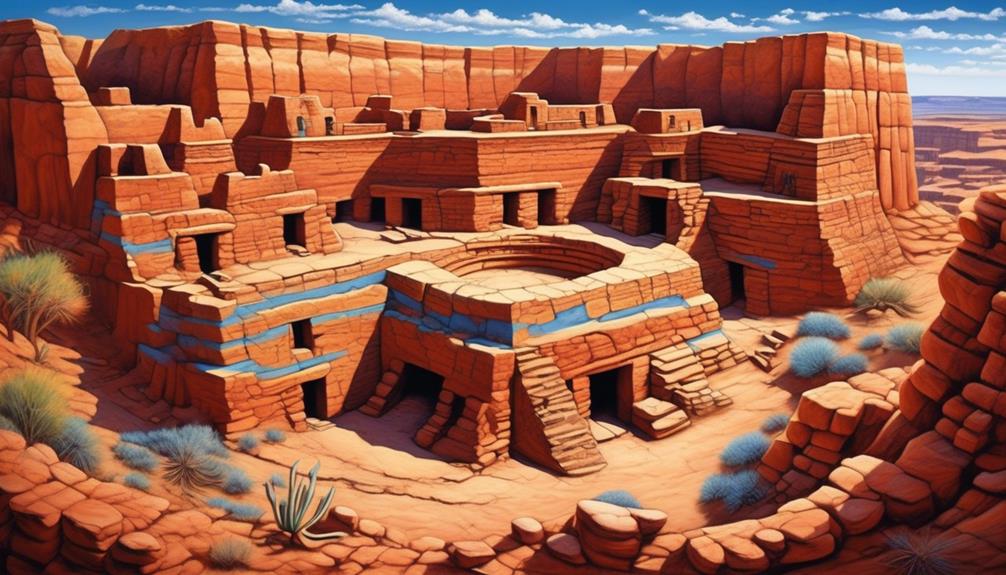
Embedded in our cultural fabric, the connection to Hopi traditions is profoundly intertwined with the spiritual significance of mesas in our tribal ceremonies. Hopi beliefs dictate that mesas aren't just physical landscapes, but living entities with great spiritual power. They're considered the dwelling places of katsinam, the spiritual messengers of the Hopi people, and are central to our cultural practices.
- Katsina Ceremonies: Mesas play a pivotal role in our Katsina ceremonies, where the katsinam are believed to emerge from the mesas to bring teachings, blessings, and assistance to the Hopi people.
- Prayer and Pilgrimage: Mesas are revered as sacred sites where prayers are offered and where individuals embark on pilgrimages to seek spiritual guidance and connect with the divine.
- Cultural Preservation: The preservation of mesas is intricately linked to the preservation of our cultural heritage. The continuation of our cultural practices and traditions is deeply rooted in the spiritual connection to these mesas, ensuring their protection for generations to come.
Our connection to Hopi traditions is a profound and enduring bond, deeply rooted in the spiritual significance of mesas and the rich tapestry of our cultural practices.
Preservation and Conservation Efforts
Our tribe is committed to implementing comprehensive preservation and conservation efforts to safeguard the spiritual and cultural significance of the mesas in our traditional practices. These efforts are essential in ensuring that future generations can continue to experience the deep connection that the mesas hold in our cultural and spiritual beliefs.
One of our primary efforts involves educating our community members about the importance of preserving the mesas. Through workshops, storytelling sessions, and community events, we aim to instill a sense of stewardship and responsibility for these sacred landscapes. Additionally, we actively engage in land conservation initiatives, working to protect the natural environment surrounding the mesas.
Furthermore, we collaborate with environmental organizations and governmental agencies to develop sustainable land management practices that respect the cultural significance of the mesas. By integrating traditional knowledge with modern conservation techniques, we strive to ensure that the integrity of these sacred sites is maintained for years to come.
Our efforts in preservation and conservation are rooted in a deep understanding of the cultural significance of the mesas, and we're dedicated to upholding our responsibilities as stewards of these sacred landscapes.
Frequently Asked Questions
What Are the Different Types of Mesas Found Within the Hopi Tribe's Territory?
Types of mesas found within the Hopi Tribe's territory include volcanic, sandstone, and limestone formations.
These geological formations impact the environment by influencing water flow and soil composition. They also provide essential wildlife habitats for various species.
The mesas play a crucial role in our ecosystem, serving as significant landmarks and contributing to the rich cultural heritage of the Hopi Tribe.
How Do Mesas Impact the Local Flora and Fauna Within the Hopi Tribe's Land?
Mesas impact the local flora and fauna within the Hopi Tribe's land by providing diverse habitats and influencing weather patterns.
The mesa formation process, shaped by erosion and geological forces, creates unique ecosystems that support a variety of plant and animal life.
This impact on wildlife is crucial for the balance of nature and plays a significant role in the cultural and ecological heritage of the Hopi Tribe.
Are There Any Legends or Myths About Specific Mesas Within the Hopi Tribe's Culture?
Legends and myths play a significant role in the cultural fabric of the Hopi Tribe. Mesas hold immense spiritual importance and are central to many of these stories.
These mesas are believed to be the dwelling places of kachinas, spiritual beings in Hopi tradition. The stories surrounding specific mesas are passed down through generations, shaping the tribe's spiritual beliefs and cultural identity.
These legends and myths are deeply rooted in the cultural significance of mesas within the Hopi Tribe.
Do Mesas Play a Role in the Traditional Agricultural Practices of the Hopi Tribe?
Mesas play a significant role in the traditional agricultural practices of the Hopi Tribe. The unique topography of the mesas influences our farming techniques, as they provide shelter from the wind and retain moisture, crucial for crop growth.
Additionally, the mesas are considered sacred and are integral to our spiritual connection with the land. Our traditional farming methods are deeply rooted in the understanding and utilization of the mesas' natural benefits.
What Is the Economic Significance of Mesas for the Hopi Tribe?
Mesas hold immense economic impact for the Hopi Tribe. The cultural significance of these landforms is deeply intertwined with our traditional agricultural practices. The unique terrain of mesas provides ideal conditions for farming, contributing to our economic sustainability.
Additionally, mesas are integral to our spiritual and ceremonial practices, further emphasizing their cultural significance. This dual importance of mesas underscores their vital role in the economic and cultural life of the Hopi Tribe.
Conclusion
In conclusion, the mesas hold a special place in the heart of the Hopi tribe. These geological formations aren't just landforms, but they're deeply connected to the spiritual and cultural traditions of the Hopi people.
As we continue to learn from and honor the significance of the mesas, let's remember that they aren't just rocks and cliffs, but they're the heartbeats of our ancestors, echoing through time.
Mary is a passionate writer who brings creativity and a fresh perspective to our team. Her words have the power to captivate and inspire, making her an essential contributor to our content. Mary’s commitment to storytelling and dedication to promoting Indigenous culture ensures that her work touches the hearts of our readers. We’re fortunate to have her as part of our team.
